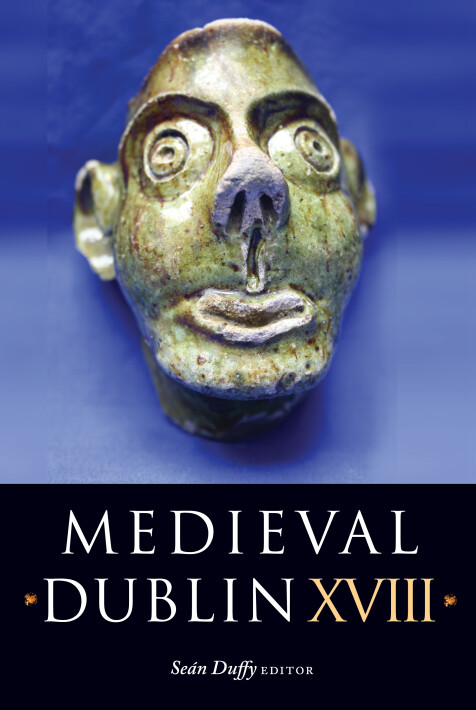Medieval Dublin XVIII
Seán Duffy, editor
This volume contains a number of important papers on an ecclesiastical theme. Lorcan Harney examines early medieval ecclesiastical enclosures in Dublin and its hinterland as part of a major study of such sites nationwide. Edel Bhreathnach studies the saints and Biblical figures to whom Dublin’s churches were dedicated, and what this tells us about the pre-Viking church there and how Christianization developed among the Hiberno-Norse of the city and suburbs. Thomas W. Smith analyses Rome’s intrusion into the affairs of the archdiocese of Dublin in the thirteenth century, while John William Sullivan looks at the phenomenon of medieval Dublin’s two cathedrals and their distinct functions in terms of Dubliners’ lived religious experience. Kevin Street Garda Station was previously the archbishop’s palace of St Sepulchre, and Alan Hayden’s recent archaeological investigations on the grounds and fabric produced results which may require a radical rethink of what the original palace looked like. Paul Duffy excavated part of another of Dublin’s great ecclesiastical complexes, St Thomas’s abbey, where he discovered, along Thomas Street, much evidence for medieval tanneries, activity reflected too in the report by Antoine Giacometti on one of the largest tanning complexes ever discovered in Ireland or Britain, which he unearthed in Blackpitts.
Both these sites give an insight into the production of leather and this volume also contains an analysis, by John Nicholl, of one of the largest collections of late-medieval footwear ever uncovered in Ireland, from Chancery Lane. Economic life in the medieval city features too in the ground-breaking study by Denis Casey of what constituted the economy of Dublin in the period immediately preceding the English conquest in 1170. Among the descendants of those English settlers were the Marewards, who typified many a late-medieval nouveau riche family who ended up marrying into the rural gentry of the hinterland, discussed by Randolph Jones. They are precisely the category elected to collect parliamentary taxes in co. Dublin in the late Middle Ages which Brian Coleman investigates, no doubt providing the English-speaking audience for whose entertainment – and perhaps for whose subtle political purposes – tales such as that of Tristan and Isolde were composed, which Caoimhe Whelan brilliantly explores in this volume.
Seán Duffy is professor of medieval Irish and Insular history at Trinity College Dublin and chairman of the Friends of Medieval Dublin.

